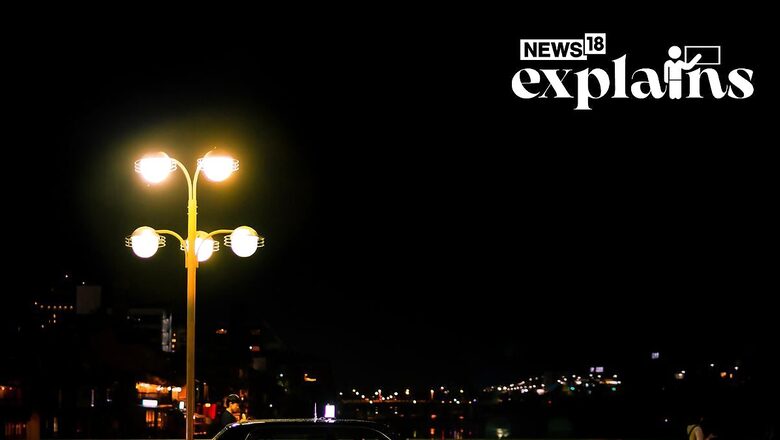
views
Late Saturday, a 7.2 magnitude earthquake struck southern Alaska, leading to a tsunami advisory, as reported by monitoring bodies.
The United States Geological Survey confirmed that the earthquake took place at 10:48 p.m., approximately 106 kilometers (65.8 miles) south of Sand Point, Alaska. The quake occurred at a depth of 13 miles, according to the U.S. National Weather Service, which issued a tsunami advisory. The Hawaii Emergency Management Agency, however, stated that there was no threat to the islands.
Amidst the recent tsunami warning, let’s delve into the meaning and significance of this natural disaster phenomenon. However, one intriguing aspect that emerged in Japan after the 2011 disaster was the occurrence of peculiar ghost stories. These stories reflected the profound grief and trauma experienced by the affected communities, with sightings and encounters with spirits becoming increasingly common.
What is a Tsunami and How Does it Occur?
A tsunami is a natural phenomenon characterized by a series of large, long-wavelength and long-period waves. It is typically caused by a sudden and violent disturbance or activity beneath the ocean’s surface near the coast.
This can result from various events such as earthquakes, volcanic eruptions, or underwater landslidesas per a report by International Tsunami Information Center. When a significant volume of water is displaced or the sea floor is abruptly raised or dropped, it can generate powerful tsunami waves. These waves propagate outward from the source and can pose significant threats and cause extensive damage when they reach the shore.
The term “tsunami” originates from the Japanese words “tsu” (meaning harbor) and “nami” (meaning wave).
Although the term “seismic or tidal sea wave” is sometimes used interchangeably, it is misleading since tsunamis can be triggered by non-seismic factors like volcanic eruptions or underwater landslides, as per the report.
Tsunami waves are distinct from astronomical tides, which are influenced by celestial bodies such as the moon, sun, and planets. The term “tsunami” is internationally accepted as the accurate and comprehensive term for these waves since it encompasses all forms of impulsive wave generation.
How Much Damage Can a Tsunami Cause?
As per ITIC, tsunami waves are particularly dangerous. They can resemble towering walls of water and continue to pose a threat to the shoreline for several hours, with waves occurring at intervals of 5 to 60 minutes. It is important to note that the initial wave may not necessarily be the largest, as subsequent waves, including the second, third, fourth, or later ones, can be even bigger.
When a tsunami wave strikes and inundates an area, it eventually retreats back toward the sea, often exposing the seafloor. However, this recession is temporary, and within minutes, another wave surges ashore. These subsequent waves can carry significant amounts of debris, including remnants of structures and objects destroyed by earlier waves.
When tsunami waves enter harbors, they generate powerful and hazardous water currents. These currents can easily break moorings of ships and vessels, posing a severe threat. Additionally, tsunamis have the potential to travel inland through river channels, forming bores—large waves or surges of water—that can extend far beyond the coastline and into rivers or other waterways. These bores can cause extensive flooding and damage in affected areas.
Some Notable Tsunamis
Some of the most notable tsunamis in history include the 2004 Indian Ocean Tsunami, triggered by a massive earthquake off the coast of Sumatra, which caused widespread devastation and claimed hundreds of thousands of lives. The 2011 Tohoku Earthquake and Tsunami in Japan resulted in catastrophic damage and the Fukushima nuclear disaster. The 1960 Valdivia Earthquake and Tsunami, the strongest recorded earthquake, caused significant casualties and affected countries across the Pacific. The 2006 Java Tsunami in Indonesia claimed hundreds of lives and caused widespread destruction. The 1755 Lisbon Earthquake and Tsunami in Portugal caused extensive devastation along the coastlines of several countries, as per reports.
The Ghost Phenomenon in 2011-Tsunami Struck Japan
In the aftermath of the devastating earthquake, tsunami, and nuclear disaster that struck Tohoku, Japan, in 2011, Richard Lloyd Parry, a journalist based in Tokyo, extensively explored Tohoku to gain a deeper understanding of the communities ravaged by the disaster. In his book ‘Ghosts of the Tsunami: Death and Life in Japan’s Disaster Zone’, he talked about the much documented the grief experienced by those affected, which included ‘supernatural sightings’.
As per Parry, for those whose family members’ remains were never found, seeking the help of mediums to locate them became a common practice, according to a report by the Guardian. Post-disaster Tohoku became a place teeming with ghosts, with numerous reports of sightings. These apparitions were seen as a consequence of the significant loss of life, as many victims were unprepared to let go of their worldly attachments. The phenomenon was also documented in various documentaries and reports.
Ghost stories became prevalent, with accounts of deceased individuals visiting acquaintances in temporary housing or taxi drivers encountering invisible passengers requesting transportation to non-existent addresses. While belief in the supernatural varies among individuals, the perception of these ghosts was genuinely held by many. The pervasive “ghost problem” in Tohoku led university academics to document the stories, and priests from various religious backgrounds found themselves repeatedly called upon to alleviate the distress of unhappy spirits that, in extreme cases, could possess the living, the report explained.
Ultimately, whether or not one believes in the supernatural is secondary to the significance of people’s genuine belief in what they saw. The ghostly encounters in Tohoku serve as a testament to the deep emotional impact of the disaster and the various ways individuals coped with their profound loss.
Associated Press contributed to this report



















Comments
0 comment